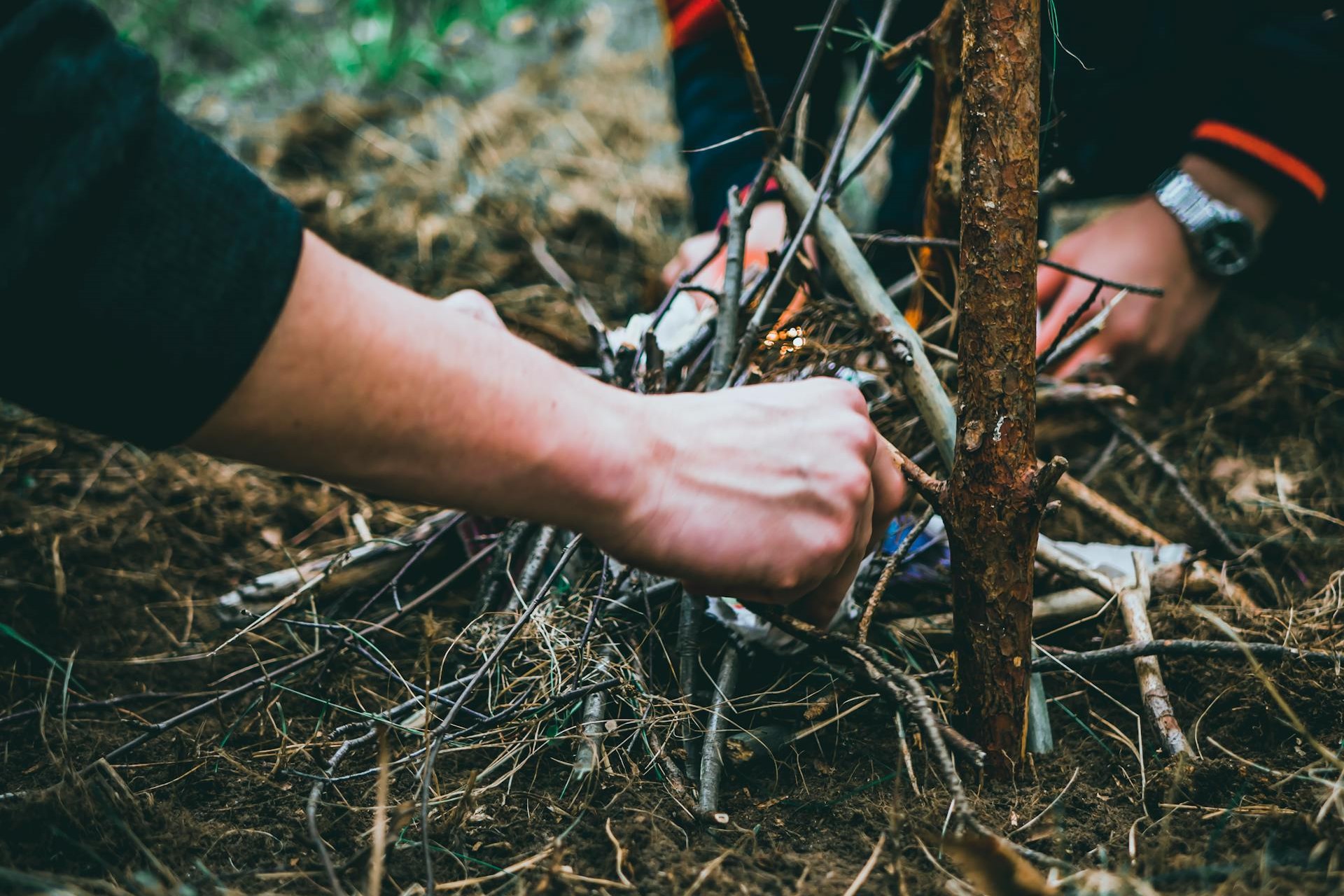Camping trips, survival situations, or even backyard adventures can take an unexpected turn when you realize you’ve forgotten matches or a lighter. But don’t panic—humans have been creating fire for millennia, long before modern conveniences existed. With some creativity, resourcefulness, and knowledge, you can successfully start a fire without matches. Here are some creative ways to start a fire that can help you out of this camping challenge.
Understanding the Fire Triangle
Before diving into techniques, it’s essential to understand the fire triangle: heat, fuel, and oxygen. Fire can’t exist without these three elements:
- Heat: A spark or friction creates the initial heat needed to ignite a fire.
- Fuel: Dry tinder, kindling, and larger pieces of wood sustain the fire.
- Oxygen: Proper airflow is necessary for combustion.
Keeping these principles in mind will help you troubleshoot if your fire doesn’t catch.
Methods to Start a Fire Without Matches
1. Friction-Based Techniques
Friction methods generate heat by rubbing materials together. These require patience, practice, and dry materials.
A. Hand Drill The hand drill is one of the simplest friction methods, but it’s physically demanding.
- Materials Needed: A dry spindle (straight stick) and a dry fireboard (flat piece of wood).
- Steps:
- Cut a small notch in the fireboard.
- Place a piece of bark or dry leaf under the notch to catch embers.
- Spin the spindle rapidly between your palms while pressing it into the notch.
- Once you see smoke, gently blow on the ember and transfer it to your tinder bundle.
B. Bow Drill The bow drill is more efficient than the hand drill, as it uses a bow to spin the spindle.
- Materials Needed: A spindle, fireboard, bow (a flexible branch with cordage), and a socket (a rock or piece of wood to hold the spindle).
- Steps:
- Create a notch in the fireboard.
- Wrap the spindle in the bowstring.
- Press the socket onto the spindle and move the bow back and forth to generate heat.
- Once embers form, transfer them to tinder and blow gently.
2. Spark-Based Methods
Spark-based methods rely on creating sparks to ignite tinder.
A. Flint and Steel This classic method involves striking steel against flint to produce sparks.
- Materials Needed: Flint, steel, and char cloth (a carbonized piece of fabric).
- Steps:
- Hold the char cloth near the flint.
- Strike the steel against the flint to generate sparks.
- When the char cloth catches a spark, transfer it to your tinder bundle and blow gently.
B. Ferrocerium Rod (Ferro Rod) A ferro rod is a modern, highly effective fire-starting tool.
- Materials Needed: Ferro rod and striker (or the back of a knife blade).
- Steps:
- Hold the rod at an angle close to the tinder.
- Scrape the striker along the rod to produce a shower of sparks.
- Ignite the tinder with the sparks and nurture the flame.
3. Lens-Based Fire Starting
Harnessing sunlight is another practical way to start a fire, provided it’s sunny.
A. Magnifying Glass A magnifying glass can concentrate sunlight to ignite tinder.
- Materials Needed: Magnifying glass and dry tinder.
- Steps:
- Position the magnifying glass to focus sunlight into a small, bright point on the tinder.
- Hold steady until the tinder begins to smoke.
- Blow gently to encourage the flame.
B. Alternative Lenses Other objects like eyeglasses, camera lenses, or even a clear plastic bag filled with water can substitute for a magnifying glass.
- Steps:
- Adjust the lens to focus sunlight on the tinder.
- Follow the same process as with a magnifying glass.
4. Battery and Steel Wool
Using a battery and steel wool is an ingenious and effective way to create fire.
- Materials Needed: A 9-volt battery and steel wool.
- Steps:
- Stretch the steel wool into a thin strip.
- Rub the battery terminals against the steel wool to create sparks.
- Once the steel wool glows, transfer it to your tinder bundle.
5. Chemical Reactions
Chemical methods can create fire through exothermic reactions.
A. Potassium Permanganate and Glycerin Mixing these two chemicals produces intense heat and flames.
- Materials Needed: Potassium permanganate, glycerin, and dry tinder.
- Steps:
- Place potassium permanganate on the ground.
- Add a few drops of glycerin.
- The mixture will react and ignite the tinder.
B. Battery and Gum Wrapper This method works with a small battery and a gum wrapper.
- Materials Needed: Battery (AA, AAA, or 9-volt) and foil-lined gum wrapper.
- Steps:
- Cut the wrapper into a thin, hourglass shape.
- Touch one end of the foil to the positive terminal and the other to the negative terminal.
- The wrapper will heat up and ignite the tinder.
Building and Maintaining Your Fire
Once you’ve created a flame, nurturing it into a sustainable fire is crucial. Follow these steps:
- Prepare Your Tinder: Use materials like dry grass, bark, cotton balls, or lint.
- Gather Kindling: Collect small sticks and twigs to build the initial structure.
- Arrange Your Fire: Choose a fire structure (teepee, log cabin, or lean-to) depending on your situation.
- Add Fuel Gradually: Start with small pieces of wood and move to larger logs as the fire grows.
- Ensure Airflow: Keep spaces between wood pieces to allow oxygen to fuel the fire.
Troubleshooting Common Issues
Problem: Tinder isn’t catching fire.
- Solution: Ensure the tinder is completely dry. Use smaller, finer pieces for easier ignition.
Problem: Sparks aren’t forming.
- Solution: Verify your tools and technique. Ensure your flint or ferro rod isn’t worn out and scrape harder.
Problem: Fire doesn’t sustain.
- Solution: Gradually add kindling and ensure proper airflow to prevent smothering.
Safety Tips
Starting a fire comes with risks. Always prioritize safety:
- Clear the area of flammable materials.
- Build your fire in a designated fire pit or clear space.
- Keep water or soil nearby to extinguish the fire if needed.
- Never leave a fire unattended.
Practice Makes Perfect
Fire-starting without matches is a skill that improves with practice. Experiment with different methods in controlled environments before relying on them in emergencies. Not only will this build your confidence, but it’ll also teach you which techniques work best for you.
Mastering the art of starting a fire without matches connects us to our ancestors’ resourcefulness and ingenuity. With patience, preparation, and practice, you’ll never find yourself in the dark—literally or figuratively—again.

